Birdfinding.info ⇒ Widespread across the South Pacific, but rarely seen outside the immediate vicinity of the islands where it breeds. Most colonies are in Melanesia and Polynesia—especially Tonga and the Cook, Marquesas, and Pitcairn Islands. Additional sites include Chile’s Easter Island and Raine Island in the Great Barrier Reef. Information about its range and status is plagued by confusion over its taxonomy and identification—many records (even recent ones) of Herald Petrel do not differentiate it from one or more of Trindade, Henderson, or Kermadec Petrels, and are therefore unreliable.
Herald Petrel
Pterodroma heraldica
Breeds in Melanesia and Polynesia, and disperses across much of the tropical Pacific.
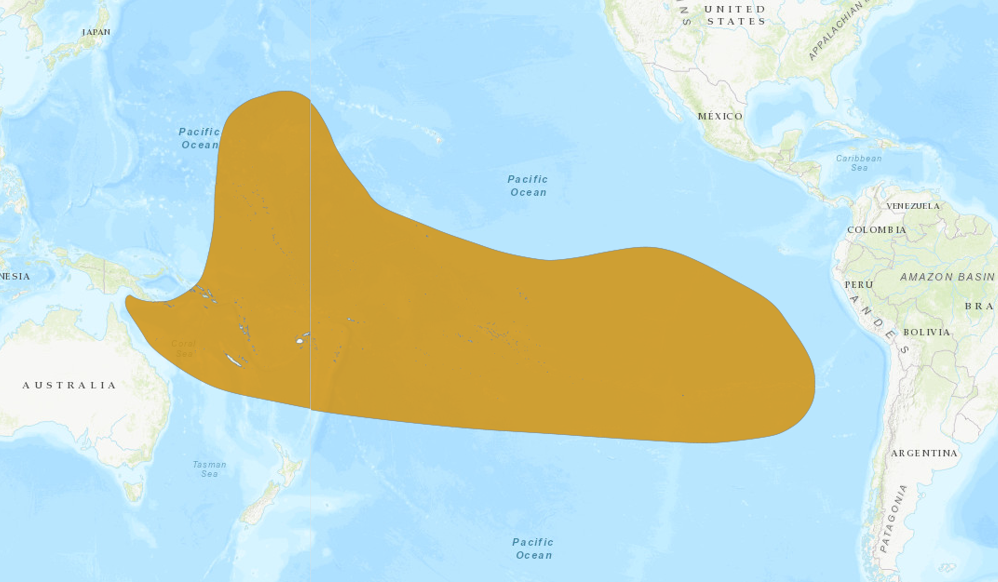
Approximate at-sea distribution of Herald Petrel. © BirdLife International 2018
Breeding. Breeds colonially on many tropical South Pacific islands and archipelagos from northern Australia east across the full breadth of Polynesia, including: Raine (northeastern Queensland), Chesterfield (New Caledonia), Tonga, Cook, Marquesas, Tuamotu, Gambier, Pitcairn, and Easter.
Breeds in small numbers, or perhaps just sporadically, in the Indian Ocean on Round Island (Mauritius) and possibly also on Cousin Island in the Seychelles.
Nonbreeding. Disperses nearly throughout the tropical and subtropical regions of the Pacific roughly between 25° North and 30° South latitudes, usually remaining far offshore or near mid-oceanic islands. There have been a handful of records farther south (to 37° South) in the Tasman Sea offshore from New South Wales.
In the North Pacific, it is known mainly from the central portion, around Hawaii, where it appears to occur annually from August to March (possibly year-round).
Identification
A medium-large gadfly petrel with dark upperparts and hood and a white belly.
Varies somewhat in the extent and intensity of dark and light coloration, but appears consistent in overall pattern.
(Note that there is some uncertainty as to whether Herald also has a dark morph. What were formerly regarded as dark Herald Petrels are now provisionally classified as Henderson Petrel, pending results of further research.)

Herald Petrel, showing dark hood, white forehead and chin, and narrow white patches on undersides of the primaries and secondaries. (Motu Nui / Motu Iti, Easter Island, Chile; March 19, 2019.) © Garrett Lau
The upperparts are essentially uniform gray or brownish, extending over the head and neck to the chest.
Within the hood, it usually (or perhaps always) shows a white or whitish area at the base of the bill that includes the forehead, lores, and chin.
The underparts are essentially all-white from the chest to the vent.
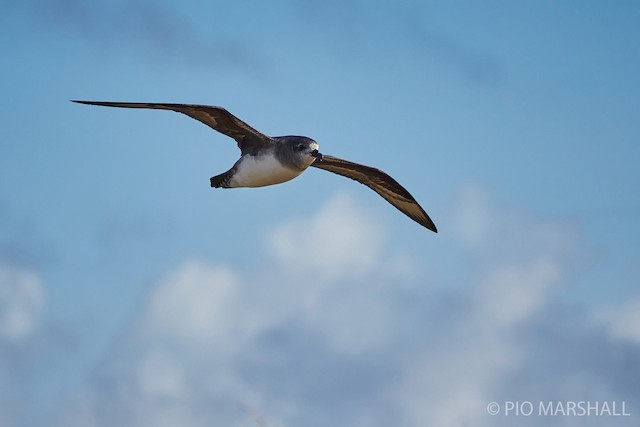
Herald Petrel, showing dark hood, white forehead and chin, and narrow white patches on undersides of the primaries and secondaries. (Motu Nui / Motu Iti, Easter Island, Chile; June 11, 2018.) © Pio Marshall
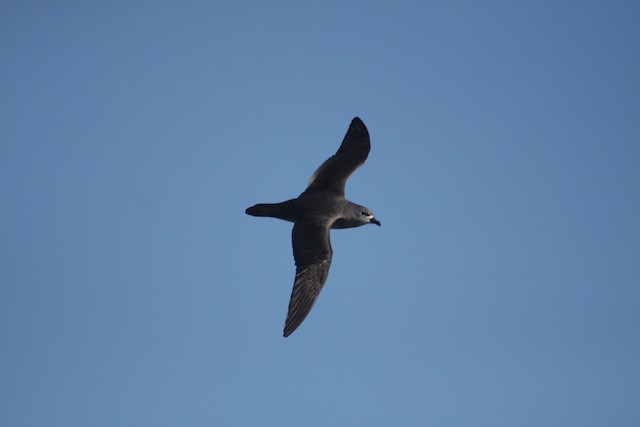
Herald Petrel, showing uniformly dark upperparts with white forehead and chin. (Cousin Island Nature Reserve, Seychelles; June 10, 2009.) © Dave Andrews

Herald Petrel, showing dark hood, white forehead and chin, and narrow white patches on undersides of the primaries and secondaries—identified by the photographer as Kermadec, but showing features much more consistent with Herald. (Motu Nui / Motu Iti, Easter Island, Chile; June 11, 2018.) © Pio Marshall
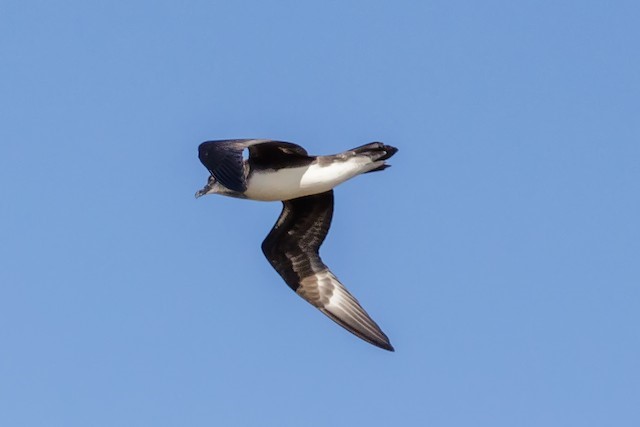
Herald Petrel, showing uniformly dark uppersides on the primaries and narrow white patches on undersides of the primaries and secondaries. (Motu Nui / Motu Iti, Easter Island, Chile; June 11, 2018.) © Pio Marshall
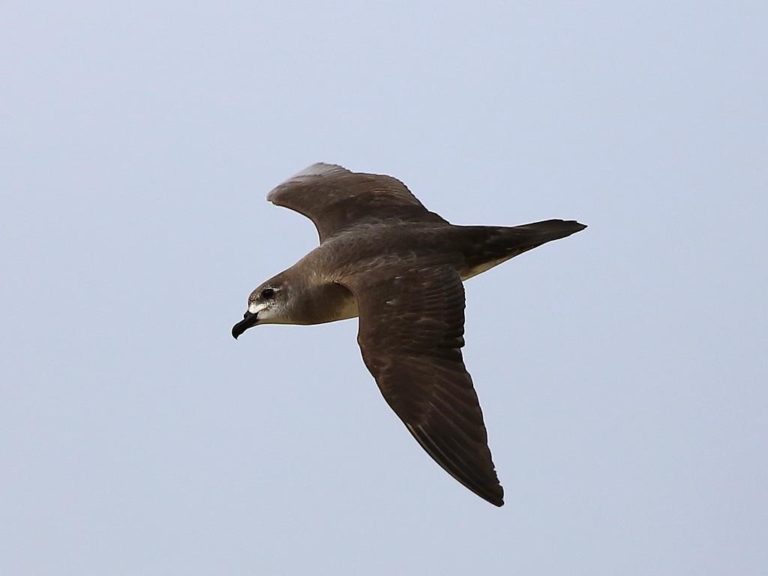
Herald Petrel, showing uniform upperparts and dark hood with white forehead and chin. (2014.) © A. MacDougall
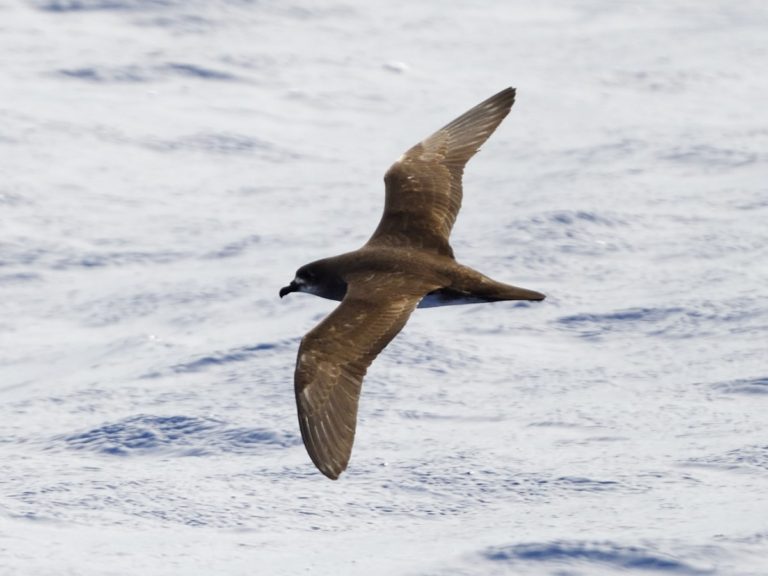
Herald Petrel, showing uniform upperparts and dark hood with white forehead and chin. (Offshore from Oeno Island, Pitcairn Islands; November 13, 2018.) © Hiroyuki & Shoko Tanoi
Most show uniformly dark upperparts under most lighting conditions, but there is significant individual variation, with some that appear generally pale-gray and may show a darker cap and paler collar.
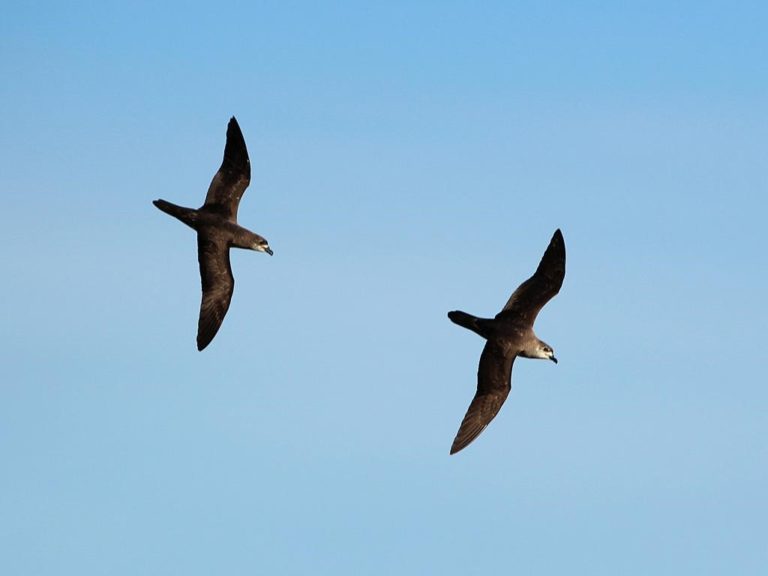
Herald Petrels, showing uniformly dark upperparts with white forehead and chin—note that the one on the right is somewhat paler and shows a dark-capped, pale-collared effect. (2014.) © D. Stewart
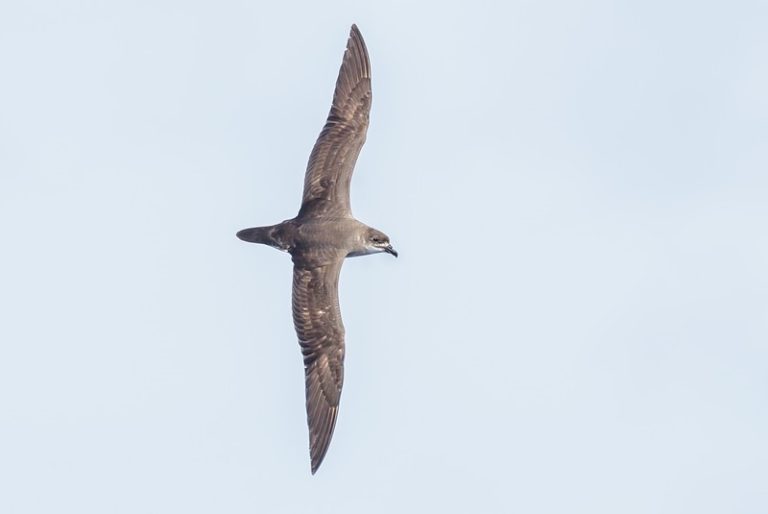
Herald Petrel, showing mostly uniform gray upperparts—but pale overall and with dark-capped, pale-collared effect—and white forehead and throat. (Offshore from Raine Island, Queensland, Australia; September 15, 2015.) © Adar Man
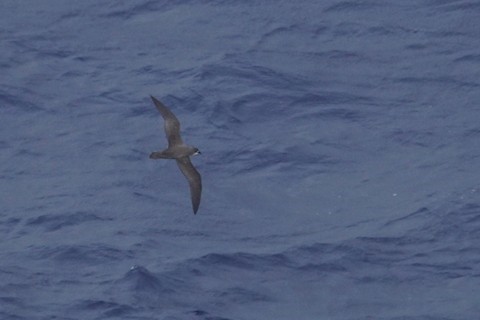
Herald Petrel, showing dark upperparts with subtly darker “M” pattern. (Offshore from Hunga Tonga Ha’apai, Tonga; February 12, 2020.) © Mike Pennington

Herald Petrel, showing mostly uniform gray upperparts—but pale overall and with dark-capped, pale-collared effect—and white forehead and throat. (Offshore from Raine Island, Queensland, Australia; September 15, 2015.) © Adar Man
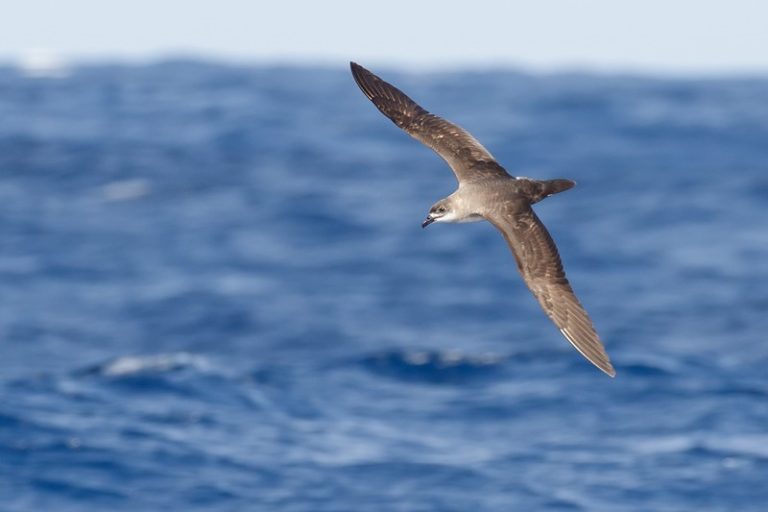
Herald Petrel, showing mostly uniform gray upperparts—but pale overall and with dark-capped, pale-collared effect—and white forehead and throat. (Offshore from Raine Island, Queensland, Australia; September 15, 2015.) © Adar Man
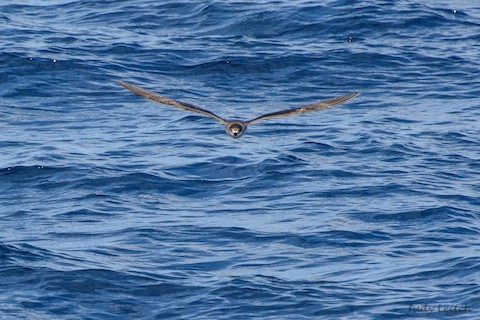
Herald Petrel, frontal view showing white forehead. (Raine Island, Queensland, Australia; September 15, 2015.) © Judy Leitch
Herald’s underwing pattern is roughly intermediate between two similar species, Trindade and Kermadec Petrels, and apparently variable enough to overlap with both of them (though they appear to be totally distinct from one another). In approximate terms, Herald’s underwing is mostly dark with some white areas at the bases of the flight feathers. As in Kermadec, Herald tends to have a sizeable white patch on the primaries. As in Trindade, the white continues to some extent along the bases of the secondaries.
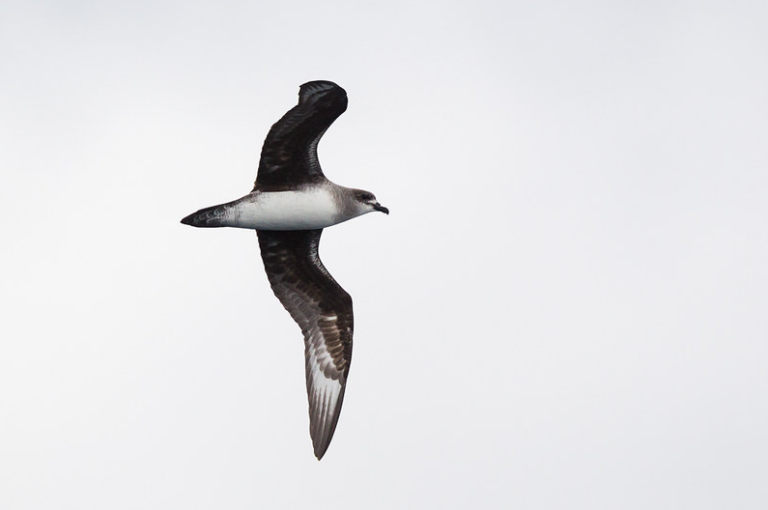
Herald Petrel, showing dark hood, white forehead and chin, and white patches on undersides of the primaries and secondaries. (Offshore from Eden, New South Wales, Australia; March 22, 2015.) © Tobias Hayashi

Herald Petrel, a pale individual with a faint hood and extensively white underwings—more so than typical Herald. (Oeno Island, Pitcairn Islands; September 9, 2013.) © North Thailand Birding

Herald Petrel, showing dark hood, white forehead and chin, and white patches on undersides of the primaries. (Oeno Island, Pitcairn Islands; September 9, 2013.) © North Thailand Birding

Herald Petrel, showing dark hood, white forehead and chin, with white patches on underwings mainly on the primaries—appearing more typical of Kermadec than Herald. (Motu Nui / Motu Iti, Easter Island, Chile; June 11, 2018.) © Pio Marshall

Herald Petrel, a pale individual with a faint hood and extensive white on undersides of the primaries and secondaries. (Offshore from Raine Island, Queensland, Australia; September 15, 2015.) © Adar Man
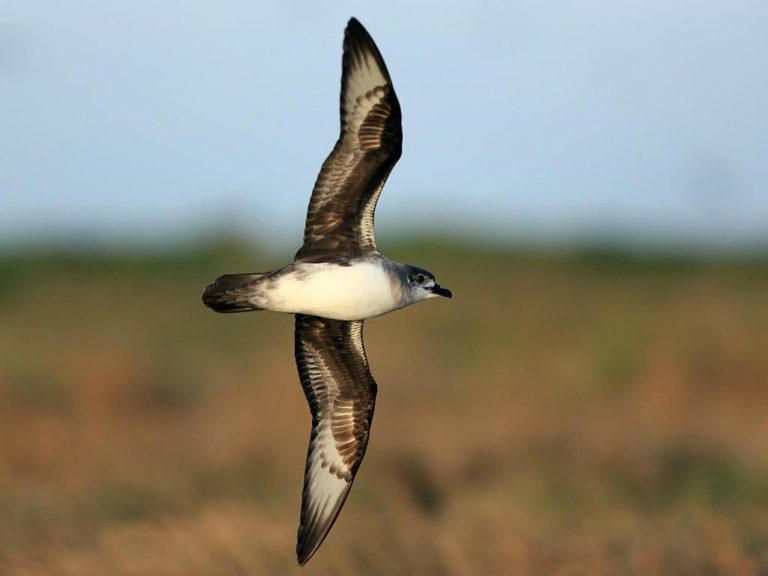
Herald Petrel, a pale individual with a faint hood and extensively white underwings—more so than typical Herald. (2014.) © A. MacDougall

Herald Petrel, a pale individual with a faint hood and extensive white on undersides of the primaries and secondaries. (Offshore from Raine Island, Queensland, Australia; September 16, 2015.) © Adar Man
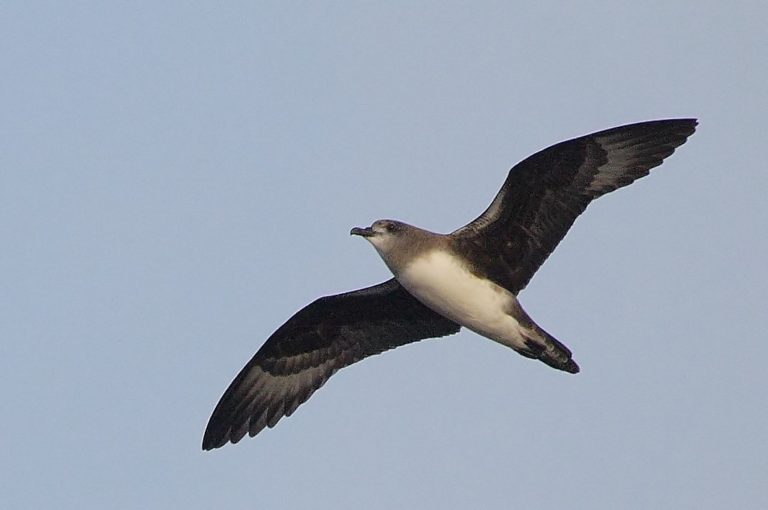
Herald Petrel, showing dark hood, white forehead and chin, with white patches on underwings mainly on the primaries—appearing more typical of Kermadec than Herald. (Motu Nui / Motu Iti, Easter Island, Chile; June 12, 2009.) © Pablo Andrés Cáceres Contreras

Herald Petrel, showing dark hood, white forehead and chin, and white patches on undersides of the primaries and secondaries. (Motu Nui / Motu Iti, Easter Island, Chile; March 19, 2019.) © Garrett Lau
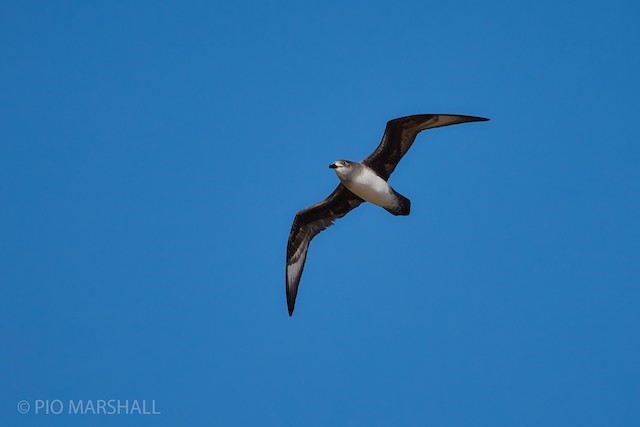
Herald Petrel, showing dark hood, white forehead and chin, and white patches on undersides of the primaries and secondaries. (Motu Nui / Motu Iti, Easter Island, Chile; June 11, 2018.) © Pio Marshall

Herald Petrel, showing dark hood, white forehead and chin, and white patches on undersides of the primaries and secondaries. (Motu Nui / Motu Iti, Easter Island, Chile; June 11, 2018.) © Pio Marshall

Herald Petrel, with a faint hood, white forehead and chin, and white patches on undersides of the primaries and coverts. (Motu Nui / Motu Iti, Easter Island, Chile; March 26, 2019.) © Pablo Galdames
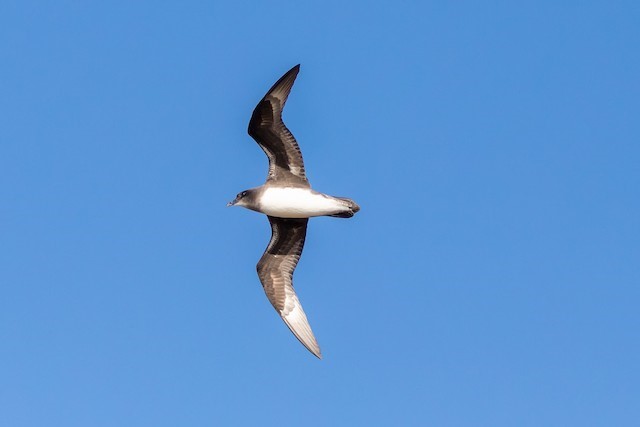
Herald Petrel, showing dark hood, white forehead and chin, and white patches on undersides of the primaries and secondaries. (Motu Nui / Motu Iti, Easter Island, Chile; June 11, 2018.) © Pio Marshall
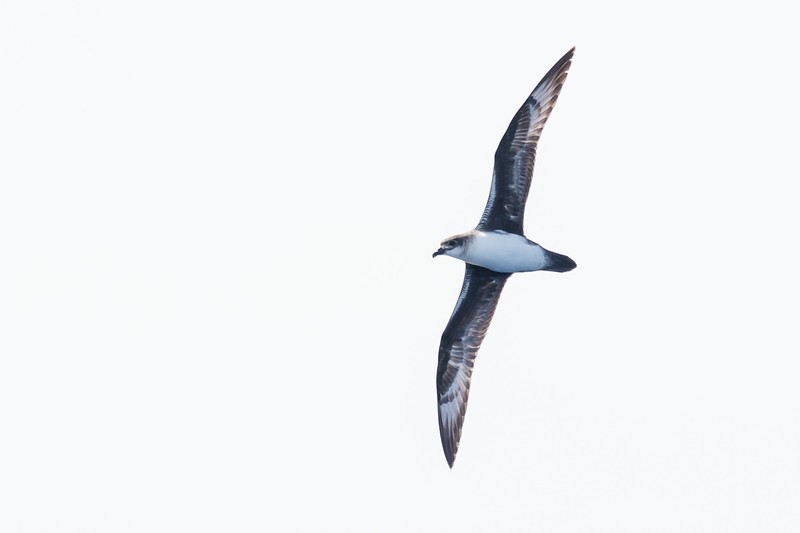
Herald Petrel, a pale individual with a faint hood and extensive white on undersides of the primaries and secondaries. (Offshore from Raine Island, Queensland, Australia; September 16, 2015.) © Adar Man

Herald Petrel, showing dark hood and white lores and chin. (Cousin Island Nature Reserve, Seychelles; June 10, 2009.) © Dave Andrews
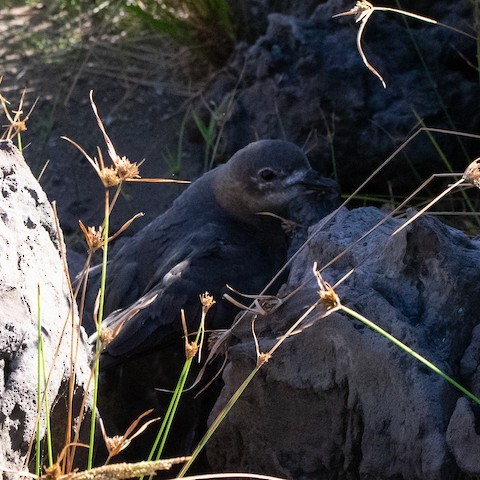
Herald Petrel, showing slightly darker cap, paler collar, and whitish lores and chin. (Motu Nui / Motu Iti, Easter Island, Chile; March 26, 2019.) © Pablo Galdames
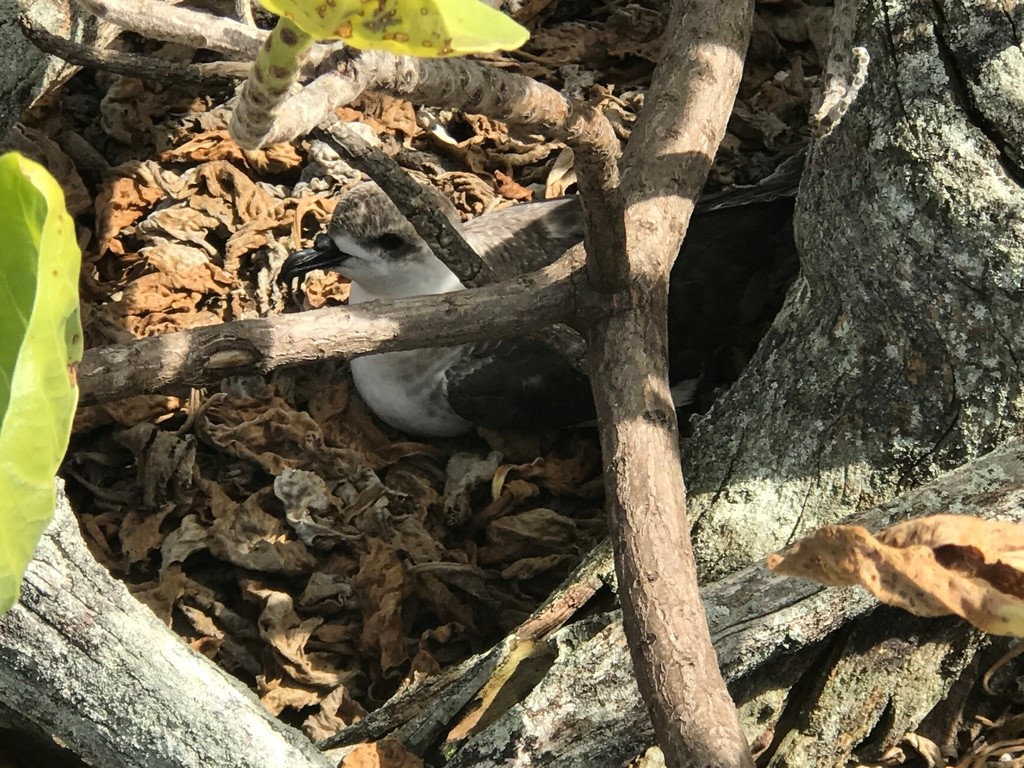
Herald Petrel. (Ducie Island, Pitcairn Islands; April 2, 2018.) © Mike Greenfelder

Herald Petrel, as identified by the photographer—which may be correct, although pale forehead and chin are not apparent in this lighting. (2014.) © D. Stewart
Cf. Trindade and Kermadec Petrels. Herald, Trindade, and Kermadec Petrels are a closely related, confusing trio that can be difficult to identify in places where they overlap. Geography is the first clue: Trindade owns the Atlantic; Herald and Kermadec are widespread across the Pacific; and Trindade, Herald, and Kermadec all occur in small numbers in the Indian Ocean—all breeding, and to some extent interbreeding, beside Mauritius on Round Island.
Trindade and Kermadec Petrels both vary from pale-bellied (pale or intermediate morphs) to dark-bellied (dark morphs). Kermadec has a wider range of pale color morphs than Trindade, and some are distinctive. For the morphs that are generally similar between Kermadec and Trindade, their underwing patterns differ consistently. On Kermadec, the underwing is mostly dark, but mottled, and with a large, immaculate white triangle in the primaries, framed with dark edges, whereas on Trindade, the underwing has an overall pattern of dark leading and trailing edges with a paler strip in between, centered on the overlap between the wing linings and flight feathers.
Trindade’s underwing varies in the proportions of light and dark, but the general pattern is consistent—although on some dark morphs the underwing can appear nearly all-dark, and some light morphs have much more extensive white and a narrow dark trailing edge.
Herald Petrel is consistently (perhaps always) pale-bellied, and has an underwing pattern that is approximately intermediate between Trindade and Kermadec: mostly dark with a smaller white patch in the primaries and a slightly paler area across the base of the secondaries. Herald usually (perhaps always) has a whitish area that includes the lores and chin, which distinguishes it from both Trindade and Kermadec.
The upperside of the wing can be important for distinguishing Kermadec from the others. Kermadec consistently shows a white stripe across the base of the primaries, whereas Trindade and Herald have essentially unform upperwings.
Kermadec also differs from the other two in shape, as it usually appears much more robust, with proportionately shorter, broader wings and tail. It also tends to be more aggressive around some other species, often behaving like a skua (which it often resembles, but much smaller).
Cf. Phoenix Petrel. Herald and Phoenix Petrels both occur over large portions of the tropical Pacific Ocean. They are very similar in size, shape, and overall pattern, and both typically show white around the chin. Phoenix generally has darker underwings than Herald, but often shows a mottled pattern that is similar to Herald’s, so underwing pattern alone is not a reliable distinction.
More reliable are their underparts patterns and overall coloration:
Underparts Pattern: Phoenix has a more extensive dark hood, which covers the whole chest, and an essentially all-white undertail. So compared to Herald, Phoenix’s white underparts are smaller and shifted toward the tail.
Overall Coloration: Phoenix generally has more even-toned plumage than Herald: blackish upperparts and hood contrasting with mostly white underparts. Herald’s upperparts and hood are somewhat variable, but apparently never as dark as Phoenix’s.
Notes
Monotypic species. Formerly regarded as conspecific with Trindade Petrel (P. armijoniana) and Henderson Petrel (P. atrata), known collectively as the Herald Petrel (P. arminjoniana).
References
BirdLife International. 2018. Pterodroma heraldica. The IUCN Red List of Threatened Species 2018: e.T22698012A132619211. https://dx.doi.org/10.2305/IUCN.UK.2018-2.RLTS.T22698012A132619211.en. (Accessed September 21, 2020.)
Brooke, M. 2004. Albatrosses and Petrels across the World. Oxford University Press.
eBird. 2020. eBird: An online database of bird distribution and abundance. Cornell Lab of Ornithology, Ithaca, N.Y. http://www.ebird.org. (Accessed September 21, 2020.)
Harrison, P. 1983. Seabirds: An Identification Guide. Houghton Mifflin, Boston.
Howell, S.N.G. 2012. Petrels, Albatrosses & Storm-Petrels of North America. Princeton University Press.
Howell, S.N.G., and K. Zufelt. 2019. Oceanic Birds of the World. Princeton University Press.
Jaramillo, A. 2003. Birds of Chile. Princeton University Press.
Onley, D., and P. Scofield. 2007. Albatrosses, Petrels & Shearwaters of the World. Princeton University Press.
Pratt, H.D., P.L. Bruner, and D.G. Berrett. 1987. A Field Guide to the Birds of Hawaii and the Tropical Pacific. Princeton University Press.
Pyle, R.L., and P. Pyle. 2017. The Birds of the Hawaiian Islands: Occurrence, History, Distribution, and Status. Version 2 (January 1, 2017). http://hbs.bishopmuseum.org/birds/rlp-monograph/. B.P. Bishop Museum, Honolulu, Hawaii.
Xeno-Canto. 2020. Herald Petrel – Pterodroma heraldica. https://www.xeno-canto.org/species/Pterodroma-heraldica. (Accessed September 21, 2020.)